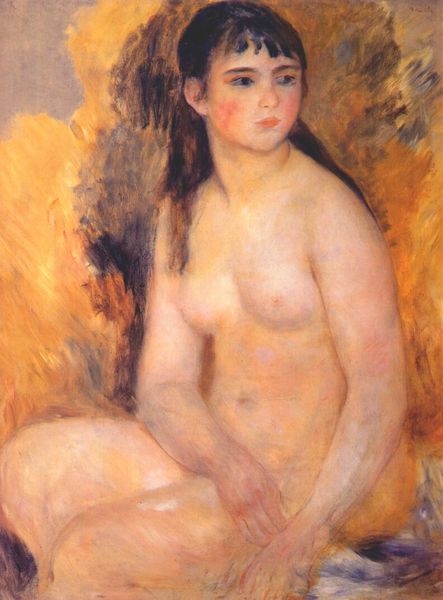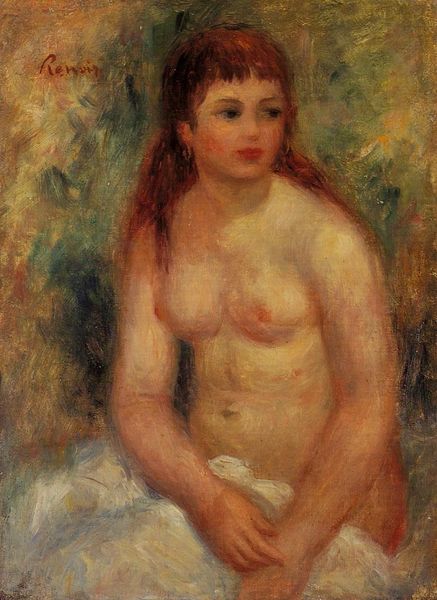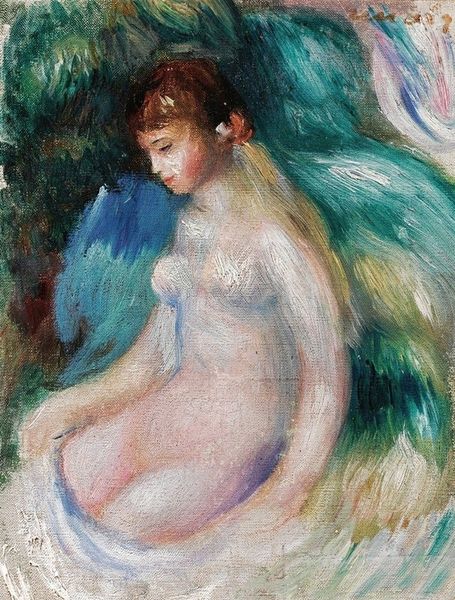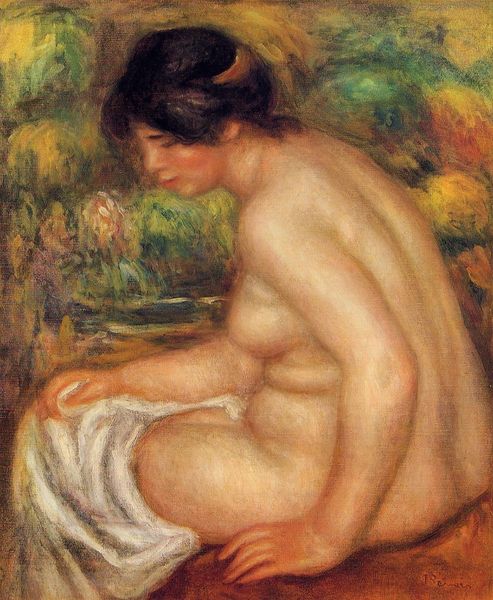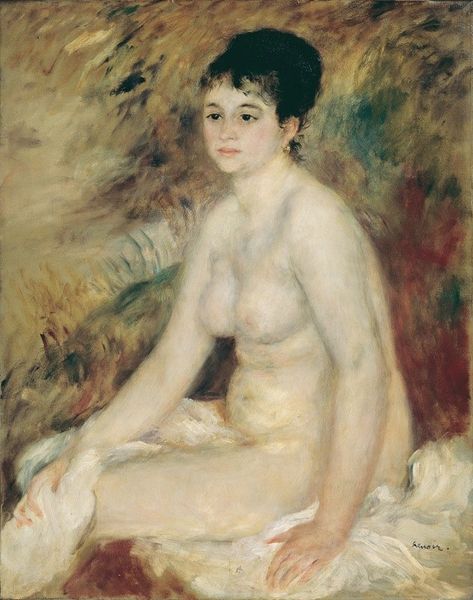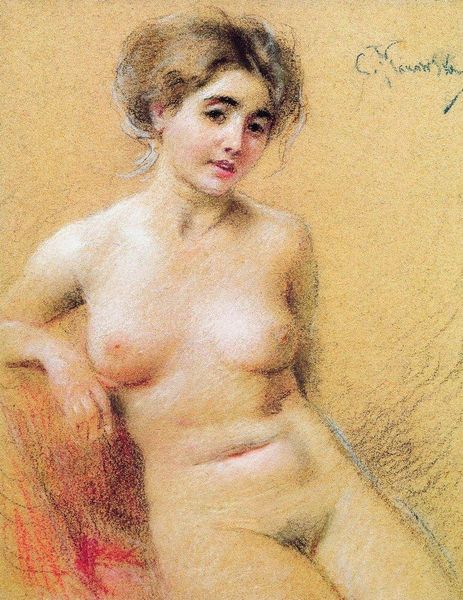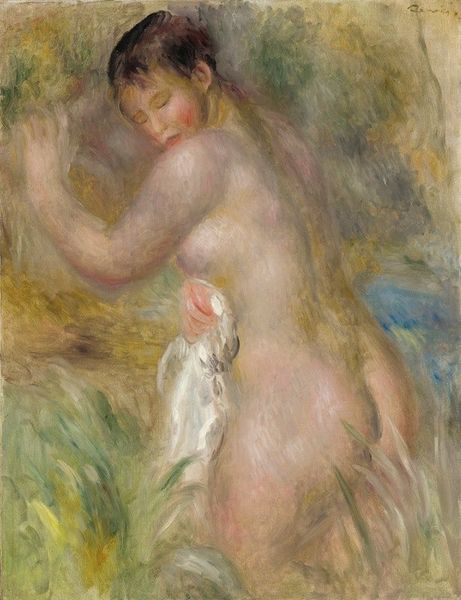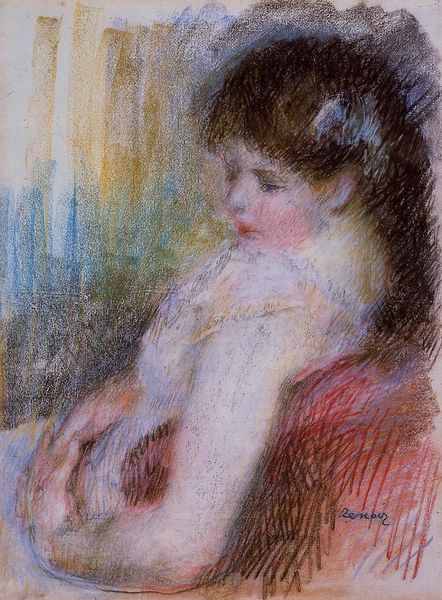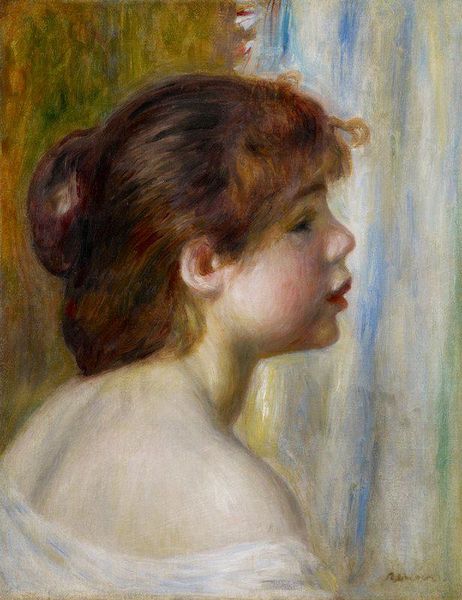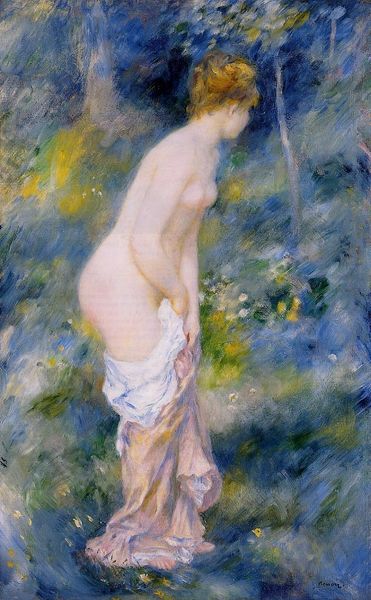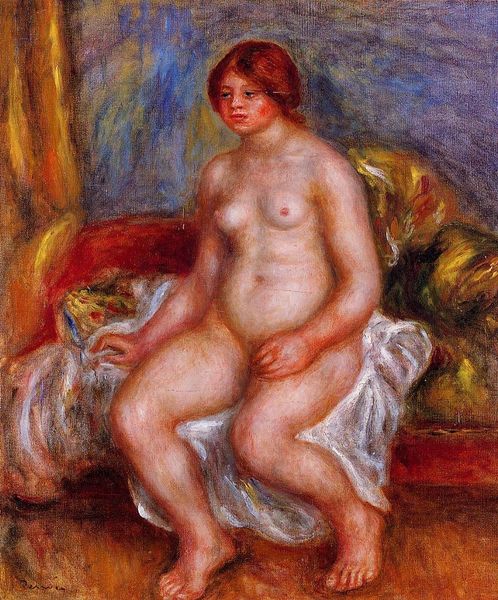
Copyright: Public domain
Curator: Pierre-Auguste Renoir's "Seated Bather," created in 1883, presents an intimate portrayal rendered in pastel. It is a piece imbued with the subtle sensuality typical of his depictions of the female form. Editor: The first thing I notice is how soft it looks; the color palette seems carefully chosen for this very effect. Look at the background that almost merges with the figure of the woman as though they're the same subject. Curator: Indeed. That integration speaks to the painting's roots in Impressionism, with its exploration of light and atmosphere. Beyond mere aesthetics, how do you perceive Renoir positioning the female figure within late 19th-century social contexts? Was it merely about idealizing beauty, or do you think there's more to consider about the figure’s gaze? Editor: While context enriches our understanding, let's observe closely. The forms appear slightly hazy, perhaps a purposeful obscuring to emphasize the texture of skin rather than anatomical perfection. He directs our gaze toward a certain tactile quality. Curator: Perhaps the obscuring hints at prevailing notions about the female body being subject to scrutiny yet also obscured from public life. The artwork perhaps embodies these ambiguities in a unique manner. Moreover, I wonder about the artist’s use of pastels—is it a choice only related to stylistic trends, or could we attribute the powdery, delicate aesthetic as reflective of the models of femininity prevalent during that time? Editor: Interesting, yet this same aesthetic, stemming directly from the qualities inherent to the medium, evokes a particular ethereal beauty. The composition focuses so directly on these aspects that broader social narratives become secondary. It's primarily a visual experience driven by color and texture. The structural interplay among tones is what dictates its charm. Curator: A charm undeniably rooted in certain political undercurrents, or at least artistic counteractions. We cannot disconnect the painting entirely from the socio-political milieu out of which it emerged, not least given that debates surrounding depictions of women were intense during that period. Editor: In either case, its visual harmony stays with you. The composition resonates due to its structural balance, creating a serene encounter—an exercise in tone. Curator: And yet, considering these tensions enriches our viewing, doesn't it? Editor: Yes, of course, though our viewpoints clearly shape our experience differently!
Comments
No comments
Be the first to comment and join the conversation on the ultimate creative platform.
